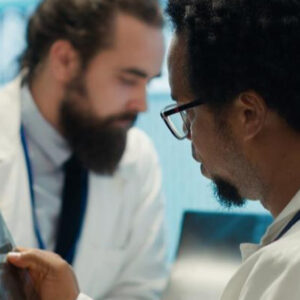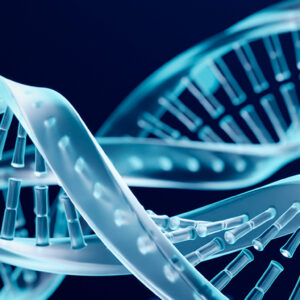Amyloidosis is a heterogeneous group of diseases in which misfolded proteins in fibril form, known as amyloids, are deposited in the tissues; continuous accumulation leads to loss of organ function and premature death. Generalized amyloidosis is almost always fatal. The specific protein deposited as amyloid determines the amyloid class. To date, there are more than 25 amyloid classes described. Even within a class there are several different syndromes which makes a clinical diagnosis of amyloidosis very complex. There are local, organ-limited and generalized amyloidosis with different pathogeneses that require individual therapy. Therefore, a precise diagnosis is a prerequisite for a specific therapy.
In addition to the acquired forms of amyloidosis (e.g., as a result of malignancy or chronic inflammatory disease), hereditary forms have been described which mostly follow an autosomal dominant mode of inheritance. The most common amyloidosis involves Alzheimer's disease and type II diabetes. Among the generalized forms, amyloidosis associated with monoclonal gammopathies (AH: immunoglobulin heavy chain; AHL: immunoglobulin heavy and light chain; AL: immunoglobulin light chain) and transthyretin-related amyloidosis (ATTR) are the most common. The ATTR type includes two groups: sporadic amyloidosis of old-age with mainly cardiac symptoms and hereditary ATTR amyloidosis, which occurs at a younger age and presents as familial polyneuropathy with progressive ascending polyneuropathy, cardiomyopathy, cardiac dysrhythmia, diarrhea and malabsorption. In AA amyloidosis caused by chronic inflammation, amyloid is found mainly in parenchyma of organs such as the spleen, kidney, liver, and intestine.
Amyloidosis is diagnosed in three steps:
1. Histological detection of amyloid in a tissue sample using Congo red staining. Tissue is obtained by excision or more usually by organ biopsy (heart, kidney, intestine, rectum, skin, liver, and others) or aspiration of subcutaneous fat tissue. Amyloids are detected by green birefringence in polarized light.
2. Immunohistochemical classification of the amyloidosis using specially produced antibodies. These are not commercially available, but the analysis is available as a service (www.amymed.de).
3. If a hereditary amyloidosis is indicated or detected, molecular genetic analysis of the identified protein is performed.
The most common hereditary form of amyloidosis is transthyretin-related amyloidosis (ATTR). It is caused by pathogenic variants in the TTR gene and follows an autosomal dominant mode of inheritance. The most common causative variant is p.(Val50Met) (Portuguese Japanese form). The TTR gene codes for the serum protein transthyretin (prealbumin). To date, over 80 disease-causing variants in this gene are known to cause amyloidosis. Since the liver is the main source of transthyretin synthesis, liver transplantation has been the only effective treatment for ATTR amyloidosis. However, since the end of 2011, tafamidis, an active ingredient that stabilizes the tetramer configuration of TTR and reduces amyloid formation, has been available. Tafamidis is approved for the treatment of patients with TTR-related stage 1 polyneuropathy (ambulatory without regular use of walking aids) in Germany.
The following list provides an overview of the types of hereditary amyloidosis which differ not only in organ manifestation but also in the different variants by which each of the hereditary amyloidosis can be precisely diagnosed. Therefore, molecular genetic detection of the respective variants is important for prognosis and individual therapy.
- Amyloid-A1,2 (AA): familial Mediterranean fever FMF type I, FMF type II, Muckle-Wells syndrome (MWS), various periodic fever syndromes (TNF-receptor associated periodic syndrome, TRAPS)
- Immunoglobulins (AL, AH): hereditary monoclonal gammopathies
- Transthyretin (ATTR): familial amyloid polyneuropathy, familial amyloid cardiomyopathy (>80 different mutations)
- Gelsolin (AGel): Finnish familial cranial nerve polyneuropathy
- Apolipoprotein A-I (ApoA1): familial amyloid nephropathy (various mutations)
- Lysozyme (ALys): familial nephropathy (various mutations)
- FibrinogenAα (AFib): familial nephropathy (different mutations)
- Cystatin C (ACysC): familial Icelandic apoplexy
- Beta protein (Aβ): Alzheimer's complex (sporadic and hereditary with different mutations of different proteins such as Aβ, AβPP, PS-1, PS-2)
- Prion protein (APrP): spongiform encephalopathies (SE) in humans and animals (bovine SE = BSE).
- Unnamed ADan/Abri: hereditary dementia
References
Ando et al. 2013 Orphanet J Rare Dis 8:31 / Sekijima Y. Hereditary Transthyretin Amyloidosis. 2001 Nov 5 [Updated 2018 Dec 20]. In: Adam MP, Ardinger HH, Pagon RA, et al., editors. GeneReviews® [Internet]. Seattle (WA): University of Washington, Seattle; 1993-2019. / Coelho et al. 2016, Neurol Ther 5:1 / Hund 2014, Nervenarzt 85:1291





















